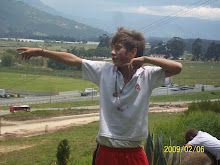The materials of the earth surface
The earth is made up of solid materials predomunant in the litosphere, liquid more usual in the idrosphyre and gaseus predominant in the admosphere
Materials in the admosphere
The admosphere is made up of mostly gaseus materials. There are also solid and liquid materials like the minute drops of water nd ice that make up the clouts. As far as we are concermet the most inportant material in the asmosphere is air. Air is not a gas but a michure of gases, it is made up of 78& nitrogen, 21% oxigent and 1% other gases
materials in the hydrosphere
The hydrosphere is made up almost exclusively of 1 material, water. Most of the water in the hydrosphere is in a liquid state but the solid water, ice and snow, is sow sow consideret to be part of the hydrosphere. There maybe other materials in the water of te hydrosphere. For example sea water is very reach in salts. We can say that sea water is a mitsure of sant a water
Materials in the litoaphere
The litosphere is made up of rocks and mineral. These are solid materials, which can be many diferent types, chapes,sizes and colors. Sand is made up of small particles of rock. Clai is also made up of minute particles of rock mixt whit water.
workshop
Air pollution is the introduction of chemicals, particulate matter, or biological materials that cause harm or discomfort to humans or other living organisms, or damages the natural environment, into the atmosphere.
EXAMPLES
Nitrogen oxides (NOx) - especially nitrogen dioxide are emitted from high temperature combustion.
Carbon monoxide - is a colourless, odourless, non-irritating but very poisonous gas.
Carbon dioxide (CO2) - a greenhouse gas emitted from combustion but is also a gas vital to living organisms. It is a natural gas in the atmosphere.
Where is the earth is more pollutet?
Because are the most evolution countries of the earth....because they have most enterprices.



